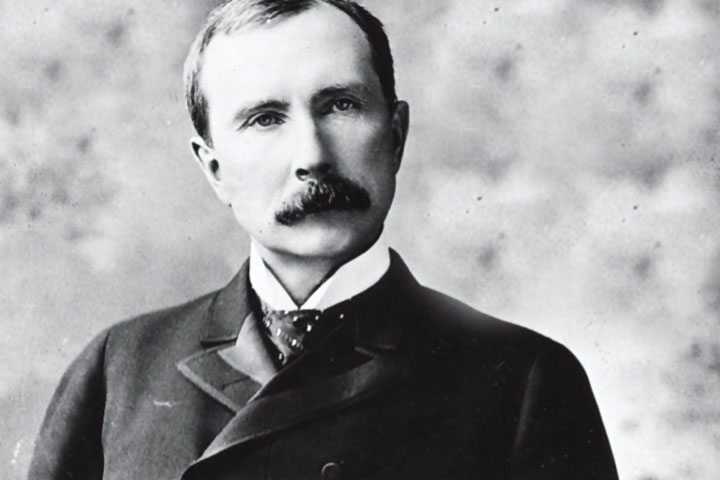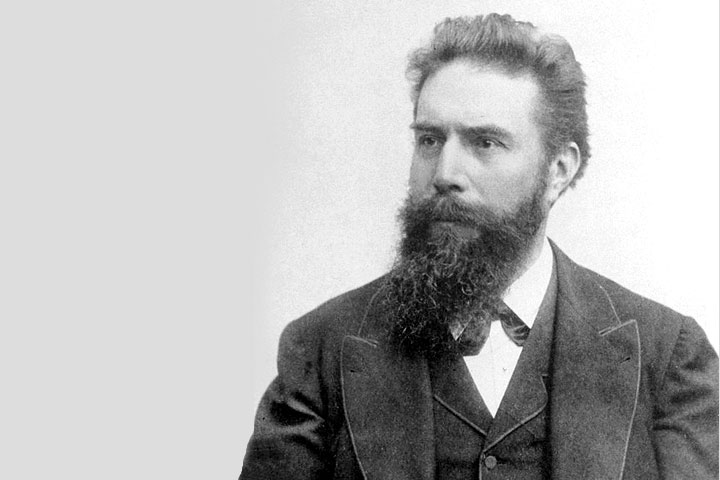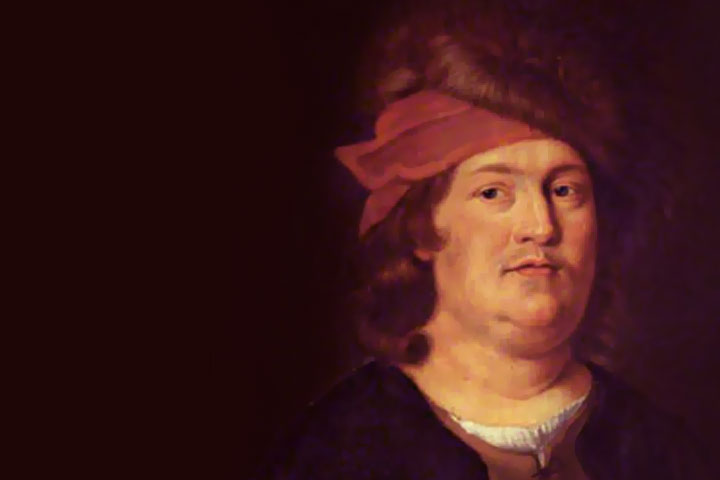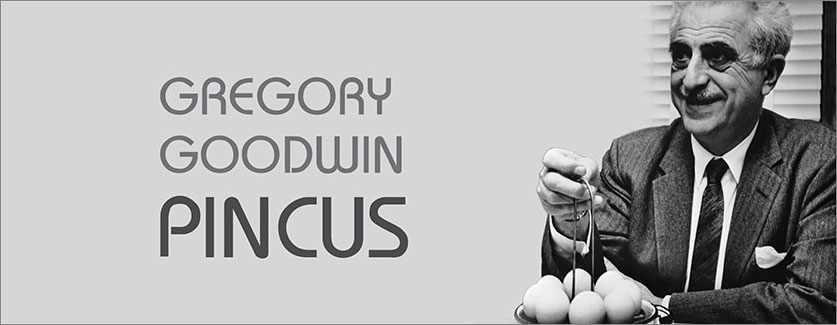

Dr. Gregory Goodwin Pincus is known to the world as one of the three discoverers of the miracle drug; the birth control pill, or as it came to be called, “The Pill”. It all started when Margaret Sanger who was desperately looking for someone who could invent the “magic pill”, met Pincus at a dinner party in New York City, and beseeched him to take up the issue of birth control. To her utmost amazement, he agreed to work on it if he was granted funds to proceed with the research work. As destiny would have it, with some efforts, funds were arranged and the initial work on hormones as a means to deter pregnancy began. A trail blazer in early hormonal and reproductive research, Gregory Pincus and his team of scientists are credited with formulating the first oral contraceptive for birth control. Thus a new revolution was set into motion by Pincus. By developing a safe oral contraceptive which not only emancipated the women, but he also altered the face of family planning for ever.

Gregory Goodwin Pincus was born in Woodbine, New Jersey on 9th April, 1903. He was a first generation American, born to Jewish immigrants Joseph W. Pincus and Elizabeth Lipman Pincus. His was a family of agriculturists; his father who graduated from Storrs college of Agriculture taught this discipline, and also was an editor of a farm journal. His maternal uncle was the dean of the New Jersey college of Agriculture and was the founder of Soil Science magazine. Pincus hailed from a family which was book friendly, culture friendly and environment friendly, which naturally stimulated him towards academics and propelled him to take it to the next level by backing environmental science.

Pincus was a bright and curious boy, who went to elementary and secondary schools in New York City, and graduated from the Morris High School there. He was an all rounder, who apart from being excellent in academics, was the president of high school debating and literary societies. He was energetic and restless and would never sit quietly for long, and during his vacations he would keep himself busy doing odd jobs and helping around the farm. In order to pursue higher education, he went to Cornell University, and in the year 1924, secured a Bachelor of Science degree. As an undergraduate student there, he founded the Cornell Literary Review and edited it too.
In the year 1927, he received his master’s and doctoral degree from the prestigious Harvard University, after-which he went to Europe as a National Research Council Fellow at Kaiser Wilhelm Institute, and at Cambridge University. He returned to Harvard after three years, and for about a year or so, worked as a biology instructor. In the year 1931, Dr. Gegory Pincus was honoured to be given the position of assistant professor, which he held for almost a good seven years. He was also a visiting investigator at Cambridge University for a brief period of time. All this travel and exposure brought him in touch with the pioneers in reproductive biology and genetics.

“As long as I remember, I knew I was going to be a scientist.” Pincus
Gregory Pincus worked diligently as a professor at Harvard University, but his heart lay in pure research and lab work. He initially concentrated on the inheritance of physiological traits, and published his first scientific paper “On Inheritance of Albinism and Brown Pigmentation in Mice”, in the year 1926, with Horace W. Feldman as co-author. Gradually, his focus started shifting towards reproductive physiology, and in 1930, he published a paper on the living eggs of the rabbit. Much of the early part of 1930s was spent in doing research work on sex hormones and gonadotrophic hormones. He did not stop at that and did some collaborative studies on the inheritance of diabetes mellitus, along with Priscilla White and the staff of the famous Joslin Clinic in Boston.
During his years in Harvard, he did ground-breaking work on multiple ovulations in animals. He experimented in transplanting animal ova from one female into another, which then carried the growing embryos to full term. His experiments in transferring eggs heralded the modern surrogate mother model.
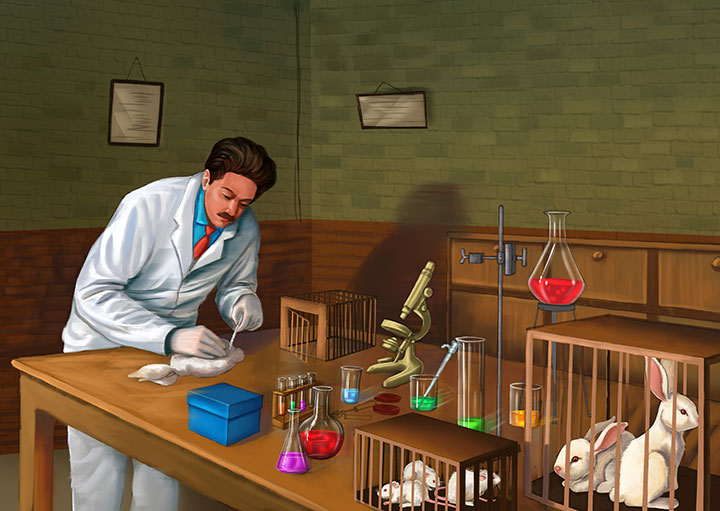
Towards the end of 1930s, he received a lot of attention from the scientific community, the public and the press for his reports on fatherless rabbits born through artificial insemination method. His popularity spread with his friends referring to the newfound method as “Pincogenesis”

Gregory Pincus’ revolutionary findings fetched him accolades as well as some brickbats too. There were headlines in the newspapers reading “test-tube babies” and “fatherless rabbits”, which brought forth anti-science and anti-Semitic accusations. His tenure at the Harvard University came to an end due the controversy, but the University couldn’t help but acknowledge his work as the most outstanding contribution to science in Harvard’s history of 300 years.
He now moved to Clark University in Worcester, where he acted as the visiting professor of zoology until 1945. This was followed by a titular professorship in physiology at Tufts Medical School, for almost four years, and then he continued to teach biology at Boston University Graduate School.

In 1944, Gregory Pincus formed a team with his school friend, Hudson Hoagland; a scientist and an explorer, and worked on the relationship of stress and hormones for the US armed forces. With their combined efforts, they went on to create the Worcester Foundation for Experimental Biology. Under the co-directorship of the two men, the foundation grew, attracting a host of accomplished, gifted and young endocrinologists. It came to be known as an important centre for research on steroid hormones, and also as a premier training centre for training young scientists in the methods of steroid biochemistry. Gregory Pincus and Hoagland’s institute became a hub of several research projects, and their generosity was evident when they provided opportunities to many budding scientists, who would have otherwise struggled to make themselves heard.

"I can't tell," he replied, "but there are no big steps, there are all little steps. We have to follow processes systematically. The big questions are: why does an egg start to develop and why does it continue to develop." Pincus
Dr. Gregory’s foundation had set the ball rolling towards scientific progress and research. Pincus was a gifted lecturer, but spent very little time in formal classroom teaching, preferring to invest most of his time in research work. M.C. Chang, who was a trained physiologist from Cambridge, was extremely impressed by Pincus’ foundation, so he joined hands with him, and proved instrumental in the search for an oral contraceptive. Dr. Gregory Pincus was aware of his friend Mararet Sanger’s quest for a contraceptive which could revolutionize the lives of millions of women and subsequently the world. Margaret had founded the American Birth control league in 1921, which later evolved into Planned Parenthood federation of America.
He realised that the need of the hour was for effective social control of human fertility, and with his knowledge and expertise, he made it his life’s mission to achieve it. During the early 1950’s Dr. Gregory and Chang started working with progesterone to hold back ovulation. They would experiment with synthetic substances which they obtained from pharmaceutical companies Searle and Syntex. Arranging funds for the research work was very challenging, as there was no help either from the government or from any other foundations. It was then that Mrs. Stanley McCormack, a women’s activist, came to their rescue, contributing generously to fund the research. She continued to help funding Dr. Gregory’s research team till 1968 when she passed away. It won’t be an exaggeration to say, that without her support, Pincus wouldn’t have succeeded in completing his study.

In the year 1952 Dr. Gregory PIncus recruited fertility specialist Dr. John Rock to lead the clinical trials of the new contraceptive pill. He was the most unlikely choice, as he was a highly regarded gynaecologist and a devout Roman Catholic to boot. Much of his life was spent in helping women with fertility problems to help them conceive. But in the course of his practice, Rock had seen women suffer due to unwanted pregnancies, collapsed wombs and premature aging. Due to the families growing large, there were many mouths to feed which in turn led to financial crisis in families. All this left a deep impression on him, and he consented to Dr. Gregory’s cause.
After two three years of intensive research by Gregory and his team, the clinical trials were confirmed to be successful on animals. This encouraged the team to take the next big step of starting human trials in the late 1950s. In the year 1956, Dr. Pincus started experimenting in Brookline, Mass, Puerto Rico and Haiti, with steroids administered in the form of pill on hundreds of women. Here again, he emerged successful, resulting in the Food and Drug Administration, authorizing the sale of steroids for miscarriage and some other female health disorders. It was a major victory for Pincus and his team! Eventually in 1960, Dr. Gregory’s hard work paid off and the FDA provided Enovid - the first contraceptive pill, with a license, for marketing it in the United States.


"Pincus can interrupt a critical problem to take 10 phone calls and then switch his mind back to the problem in a second,"
Pincus was filled with zeal and positivity and he like a missionary, travelled all over the world observing the problems of human population, teaching means of control to the masses and gathering disciples on the way.
Although there was opposition in Massachusets from the Catholic Church, Dr. Gregory surged ahead with his mission. Margaret Sanger stood by him in his endeavour and was a constant source of encouragement. Gregory Pincus was a sensitive man, who was intelligent enough to wisely handle problems related to population control, as a lot was as stake medically, ethically and politically. He wasn’t aware of the of the long term effects of anti-fertility agents, but he made sure that the clinical and laboratory testing was done in the best possible manner.
Just as he was sensitive to his work, so was he sensitive to the needs of his family. He was a responsible husband to his wife Elizabeth Notkin, whom he married in 1924, and a doting father to his three children. The number of activities he was involved with was sure to drain the energy of even the most robust of person; but Pincus would handle it all with élan, never ignoring either work or his family. Despite the responsibilities, he would be relaxed, calm and as fresh as a daisy.

Dr. Gregory Pincus’ contribution, to the world of science, influenced millions of lives in a very positive way. His Pill changed the lives of many women by improving their health and status, and giving them more control. He was widely applauded for his work and was showered with various awards and honours. He was given the Albert D. Lasker Award in Planned Parenthood, and also the Cameron Prize in Practical Therapeutics from the University of Edinburgh. Apart from this, he was also given the Oliver Bird Award, the Modern Medicine Award, the City of Hope National Medical Centre Award, to name a few. Despite these numerous awards, his most prized honour was his election to the National Academy of Sciences, in 1965. Pincus was never awarded the Nobel Prize, but that doesn’t diminish the importance of his remarkable contribution to the world.

Two years after being elected to National Academy of Science, unfortunately for Gregory, he was gripped by a debilitating bone marrow disease, which was aggravated due to exposure to harmful lab chemicals. He could not be saved by any medical intervention, and succumbed to his illness at Peter Brigham Hospital on 22 August, 1967 in Boston, Massachusetts. He was survived by his wife and three children, and the commendable work that he had done in the field of women’s health.

“There is more to discover than we now know. But in the blazing or flickering light of what we do know...wilful prejudices fade, and our considered and tested knowledge offers a firm basis for what we can and should do.” - Dr. Gregory Pincus
A brilliant scientist and a good human being, Gregory Pincus, guided the most monumental medical advancement of the 20th century, leading it to a roaring victory. He was like an angel for women, giving them more control over their bodies, their lives and subsequently liberating them. Women were initially wary of consuming the pill when it was first marketed, but with time, millions of women all over the world are happily using it and the number is still growing.
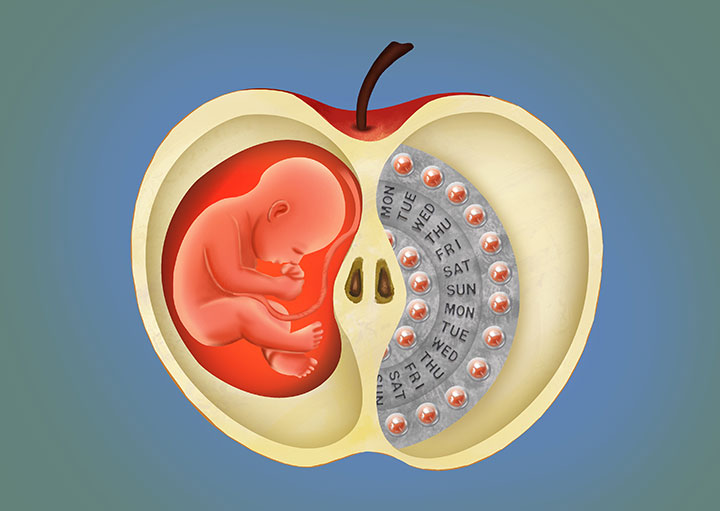
Due to Dr. Pincus’ discovery, women can afford to avoid pregnancy, take up long term jobs, pursue higher education and live a much more fulfilling life than previously experienced.
Oscar Hetcher an endocrinologist at Northwestern University school of medicine who met Pincus at WFEB in 1944, has written a homage to Gregory Pincus in which he says, “I feel Gregory Goodwin Pincus – Goody to his friends- is too big a man to treat in a ritualistic fashion. Pincus for me represents the prototype of a new scientist, whose life and achievements merit critical examination and analysis. Pincus and his life merit a critical case history, because if new Pincuses arise in the future they will have a powerful impact upon the world.”
Next Biography








